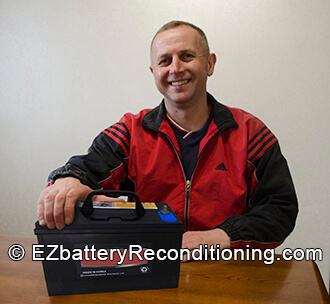Are you looking to work in cleantech and need your solar engineering degree credits translated into English?
The post How Academic Transcript Translation Affects International Admissions appeared first on Green Prophet.
Are you looking to work in cleantech and need your solar engineering degree credits translated into English?
International student enrollment in colleges and universities continues to rise each year. As more students look to study abroad, the need for accurate academic transcript translations is crucial for admissions officers to fairly evaluate international applicants. Proper translations eliminate confusion, provide clarity, and give context to grades and courses from overseas institutions.
The stakes are high, as a spotty translation can derail an applicant’s chances or lead to a mistaken denial. On the other hand, a clear and precise rendering of academic records aids admissions committees in assembling a well-rounded, diverse student body. As the translation industry works to meet demand, both students and universities are finding better ways to handle this indispensable part of the admissions process.
How Transcript Translation Affects Admissions Decisions
Without accurate academic transcript translation, admissions officers face a difficult task evaluating international applicants. They need transcripts that faithfully convey an applicant’s educational background and academic achievements. This requires a clear interpretation of grading scales that vary widely between countries. In particular, how to translate degree classifications is crucial, as different educational systems have distinct ways of assessing academic performance.
Such as, a “70” grade in the U.S. grading system is near failing, but may be considered an “A” grade in other countries. The differences must be taken into account when translations are made so that students can’t be unfairly penalized. At the very least, things like distributions in grading, the examination periods, and credit hours in a course should be clear in the translation.
But proper transcript translation also gives more helpful context to an applicant’s choice of courses, fields of study, and educational milestones. It helps with admissions officers matching student backgrounds to the focus areas of the institution. In addition, it also helps to identify candidates who are most likely to thrive in their programs and campus environments.
Even high-performing students can accidentally submit transcripts that make people wonder, or that do not convey their achievements, without the benefit of accurate translations. But small mistakes can easily cost otherwise brilliant candidates not getting admission, that is, in an extremely competitive world.
Key Players in the Transcript Translation Process
International admissions involve cooperation between applicants, translators, and university admissions staff. Each plays an important role in ensuring applications portray candidates accurately while moving efficiently through the process.
Students provide verifiable academic documents from previous institutions. This includes transcripts, mark sheets, degree certificates, and other supporting documents. Students are best served by working with recognized translation services rather than attempting do-it-yourself translations.
Academic translators possess specialized expertise in conveying discipline-specific content, educational systems, and the cultural nuances embedded in academic language. Trusted translators hold accreditations signifying advanced training and education. They keep current on the evolving grading systems, educational norms, and terminology used around the world.
University admissions officers facilitate evaluation by clearly communicating admissions requirements and priorities for each academic year. They provide grading guidance, watch for red flags, and help guard against fraudulent submissions. Admissions staff play a key role in partnering with qualified translators to ensure institutional standards are met.
Bridging Language and Cultural Gaps
Academic credentials cross both language and cultural barriers as transcripts make their way from local institutions to overseas universities. Reliable translators adeptly traverse these divides.
Translating services employ professionals fluent in the original language while intimately familiar with norms and standards in the destination country. Top services often assign two linguists to a translation project. The first possesses native-level fluency in the original language and renders an initial translation. The second linguist then reviews it to ensure the adaptation accurately conveys the source material while mirroring accepted practices in the target region.
These services also maintain updated grading references and educational resources from academic systems worldwide. By bridging linguistic and cultural gaps, they empower admissions committees to view students through a localized lens even when applying from overseas.
Technology and Academic Transcript Translation
Advancements in translation technology are also making the process faster and more accurate. Machine translation programs continue to improve, powered by artificial intelligence capable of adapting to new languages and contexts. These tools excel at translating common phrases and standard document formats like academic transcripts.
The best services combine AI capabilities with human expertise to optimize output. Advanced tools identify when machine translation likely falls short and automatically route the content to credentialed linguists to finalize. This allows humans to focus their skills on tackling complex discipline-specific passages unlikely to translate well automatically.
Some platforms provide specialized optical character recognition (OCR) able to scan and convert transcripts into editable electronic documents. This facilitates machine and human translation, reducing delays and costs associated with hard copy transcripts.
These technologies enable more students than ever to access high-quality translation services. By lowering barriers, they support universities in evaluating a broader, more diverse applicant pool drawn from across the globe.
Best Practices for Academic Transcript Translation
Students and universities can take proactive steps to ensure application materials like academic transcripts aren’t lost in translation. By working with trained linguists from the early stages, applicants avoid scrambled translations that fail to convey their academic journeys.
Universities benefit by aligning with
Recommended Story For You :

Bringing Dead Batteries Back To Life Is Simple!

SEPTIFIX to the Rescue! Say Goodbye to Problems and Hello to Savings

Ecomposing of Paper Towels Produce Methane Gas

A Leading Cause Of Global Warming!

A cleaner world where energy is abundant essentially free

and sourced directly out of the inherent power of the space surrounding us.

MIT Discovery can cut power bills by 65%

Easy DIY Power Plan Will Change Our World Forever

Discover the World with Our Passionate Geography Teacher in Memphis!


